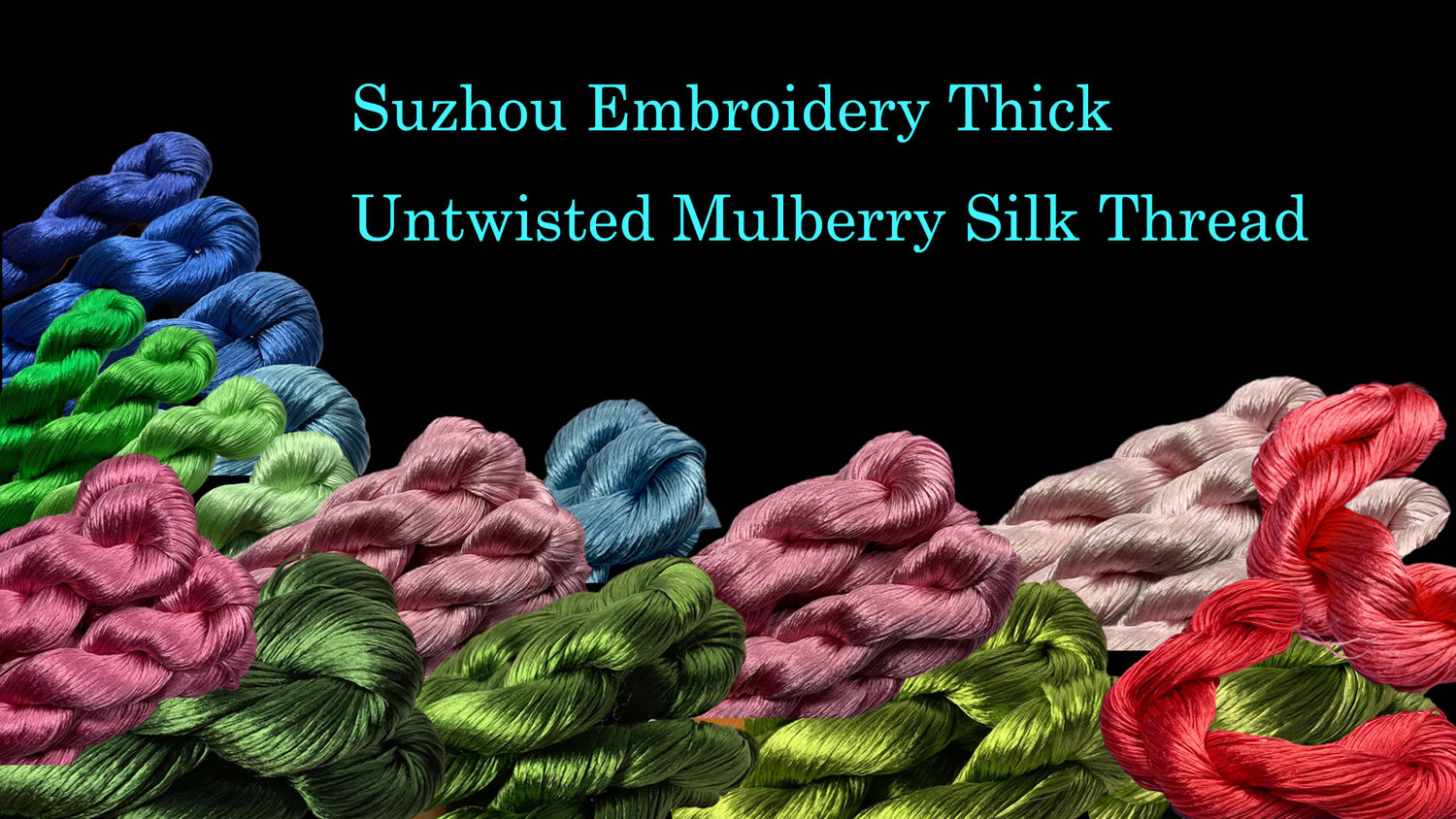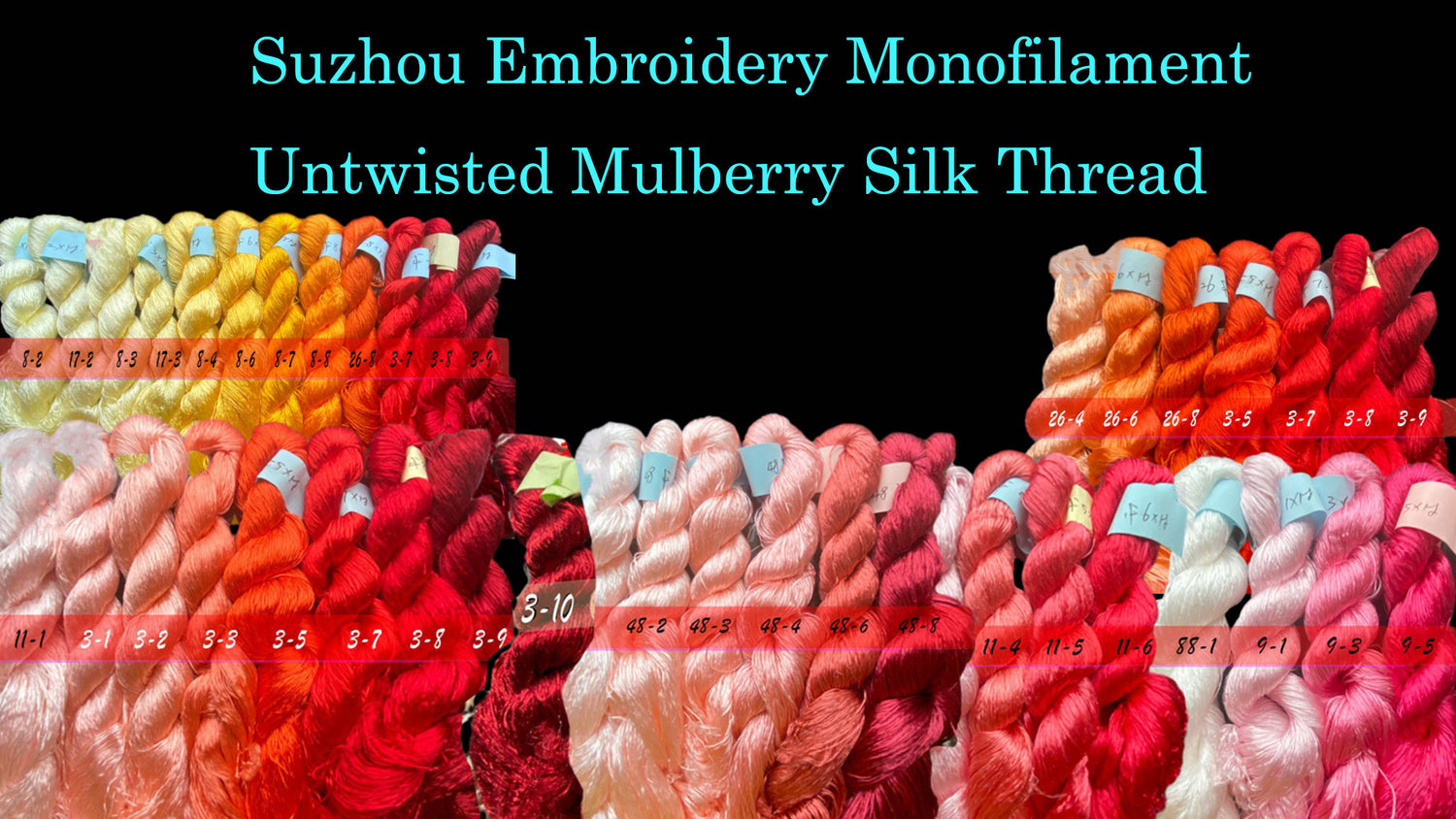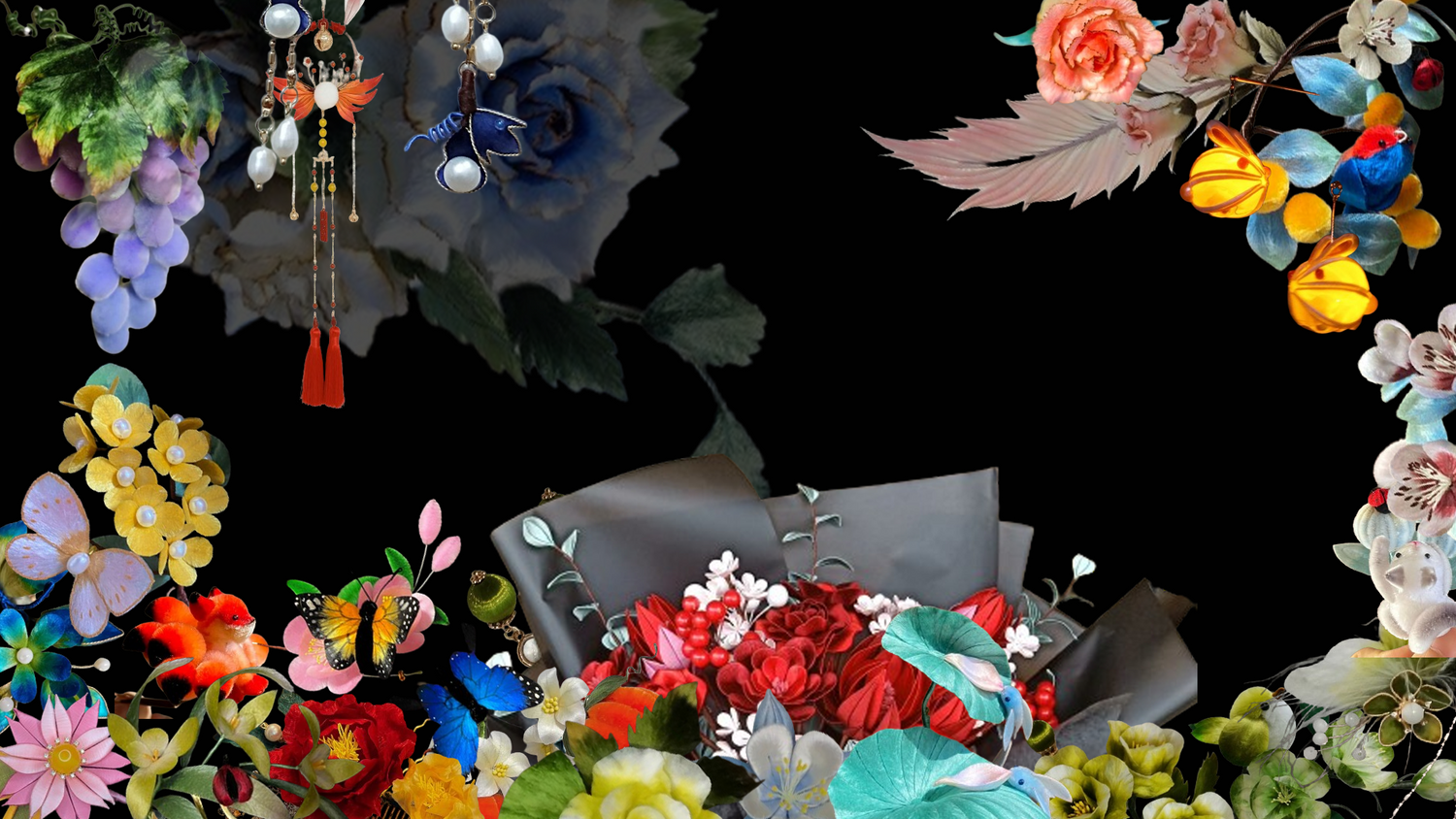
The Folk Characteristics of Chanhua Craftsmanship
Share
1.1.1 Yingshan Chanhua
Yingshan Chanhua is a craft from Yingshan County in Hubei Province. Yingshan County, under the jurisdiction of Huanggang City, has a long tradition of mulberry planting and silkworm farming. The locally produced silk is soft and of high quality, providing essential materials for the birth and development of Chanhua craftsmanship.

The appearance of Yingshan Chanhua can be traced back to the Northern Song Dynasty(over 1000 years ago). The Northern Song poet Song Qi wrote in "Spring Post Poems: Ten Poems of the Empress's Pavilion": "Warm emerald floats on the sky, and late red rises on the sun's glow. Treasure banners are paired with swallows, and colorful trees face Chanhua." Here, "paired swallows" and "Chanhua" refer to the local festival customs of Yingshan. The "Yingshan County Annals" records: "On the Dragon Boat Festival on May 5th, ... colorful pouch monkeys are made and worn by children." Chanhua evolved from these customs.
Chanhua craftsmanship originated from customs and has remained closely connected with the lives of Yingshan people after taking shape. Whether in daily life or in red and white affairs, Chanhua plays an indispensable role with its rich and flexible forms.

In Yingshan, when a child turns one year old, elders make Chanhua in the shapes of little tigers, bats, fish, etc., and sew them onto the child's shoes and hats, expressing blessings for a bright future, prosperity, and good fortune. During weddings, Chanhua is made into shapes like pomegranates, lilies, and peonies, symbolizing fertility, reunion, and perfection. On elderly birthdays, Chanhua is crafted into characters, combined with auspicious patterns, to express birthday wishes.
In the late Ming and early Qing dynasties, Chanhua craftsmanship reached its peak. During the Republic of China period, Yingshan Chanhua was further inherited and developed, producing many classic works. Most existing Yingshan Chanhua collections belong to this period.

Today, Yingshan Chanhua continues to shine as a traditional craft. In 2011, Yingshan Chanhua was listed in the third batch of provincial intangible cultural heritage in Hubei Province. In 2012, Zhang Shizhen was declared the representative inheritor of Yingshan Chanhua. Chen Guangying, Zhang Shizhen's apprentice, also became a representative inheritor in 2012. As Zhang Shizhen's only apprentice, Chen Guangying continues to innovate while inheriting the traditional craft, using new compositions and designs to make Yingshan Chanhua more aligned with modern aesthetics, achieving remarkable success.
1.1.2 Southern Fujian Chanhua
Southern Fujian Chanhua, also known as Jihua or Chunzaihua, is a craft from Xiamen and Quanzhou in Fujian Province. According to the occasions on which Chanhua is worn, Southern Fujian Chanhua is divided into categories such as bride's flowers, mother-in-law's flowers, and mother's flowers.

In Southern Fujian, "marriage, childbirth, and building a house" are three very important events in a person's life, and the Chanhua appearing in the corresponding ceremonies have specific names. For example, in a wedding ceremony, the Chanhua worn by the bride is called "bride's flowers," and the gift from the bride to her mother-in-law is called "mother-in-law's flowers." Notably, the mother-in-law's flowers consist of two parts: a regular Chanhua and a Chanhua shaped like an open mouth. The bride first inserts the regular Chanhua into the open-mouth-shaped Chanhua and then wears it on her mother-in-law's head, symbolizing harmony and mutual understanding between the bride and mother-in-law after marriage.
Chanhua not only plays a role in special ceremonies but is also part of daily life in Southern Fujian. The "Xiamen Annals" from the Qing Dynasty records: "Women on the island weave flowers into dragons, phoenixes, sparrows, butterflies, and other forms, and wear them all over their heads; ... not wearing flowers is considered abnormal. Living flowers are especially exquisite, and gifts must include flowers." This highlights the importance of Chanhua in Southern Fujian.
Southern Fujian Chanhua is a living fossil of Southern Fujian folk culture. On June 13, 2008, Xiamen announced the inclusion of "Chunzaihua Customs" in the first batch of intangible cultural heritage projects in Xiamen. Hong Baoye and Hong Suzhen were listed as representative inheritors of "Chunzaihua Customs."







